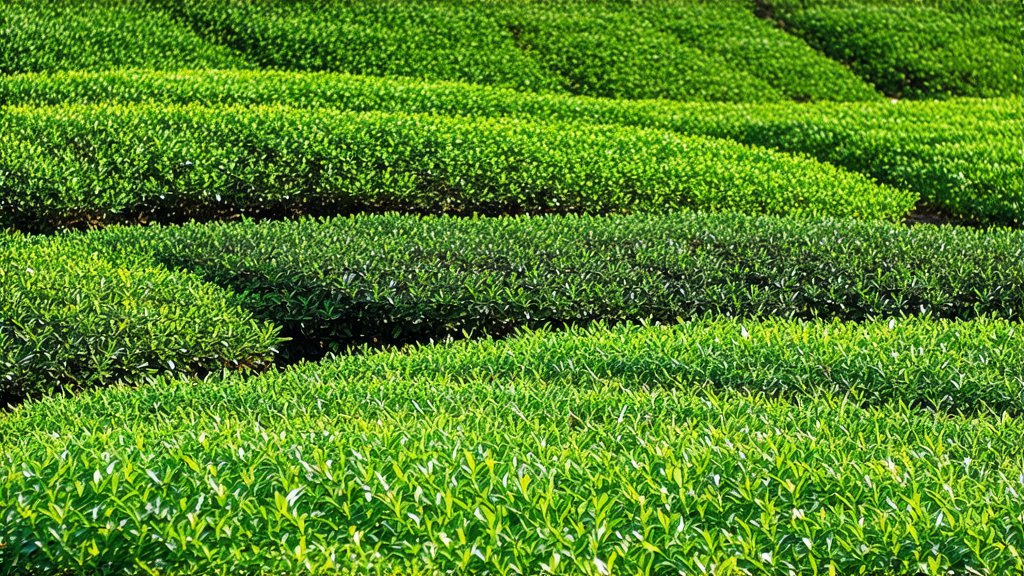
The rich tapestry of Chinese tea culture is adorned with numerous jewels, and among them, the Tieguanyin Oolong tea stands out as a particularly exquisite gem. This variety hails from the Fujian province in China, specifically within the Anxi region, where it has been cultivated for centuries. Its name, "Tie Guan Yin," translates to "Iron Goddess of Mercy" or "Iron Buddha," which reflects both its divine status in the world of tea and its origins tied to Buddhist monastic life.
Historical Background
The history of Tieguanyin dates back over 300 years, rooted deeply in the traditions of the Anxi region. Legend has it that the tea was discovered by a poor scholar named Wei Yin who found an ancient wild tea plant on a cliffside. Moved by compassion, he adopted and cared for the plant, eventually propagating it and sharing its leaves with others. The tea gained popularity rapidly due to its unique flavor profile and health benefits, earning it the revered title of "Iron Goddess."
Varieties and Characteristics
Tieguanyin is primarily grown in the Wuyi Mountains of Fujian Province but is also cultivated in other parts of China like Guangdong and Taiwan. It comes in two main varieties: Anxi Tieguanyin and Muzha Tieguanyin. Anxi Tieguanyin is the original strain, known for its floral aroma and smooth taste, while Muzha Tieguanyin, grown in Taiwan, offers a more robust and creamy texture with a slightly different flavor profile.
Cultivation and Harvesting
The cultivation of Tieguanyin tea requires meticulous care and attention. The tea bushes are typically grown on rocky terrains at high altitudes, which contribute to the complexity of the tea's flavors. Harvesting is usually done multiple times a year, with the spring harvest considered the most prized due to the tender leaves and optimal growing conditions.
Processing Techniques
The processing of Tieguanyin involves several intricate steps that contribute to its distinctive character:
- Withering: Freshly picked leaves are spread out to wilt under the sun or in shaded areas, reducing moisture content and preparing them for the next stages.
- Fixation: The leaves are then quickly fried or steamed to halt oxidation, preserving their green color and fresh aroma.
- Rolling: The fixed leaves are rolled to release more essential oils and shape the leaves into their characteristic tight curls.
- Oxidation: The leaves undergo partial oxidation, a delicate balance between green and black tea processes, giving Tieguanyin its unique semi-oxidized state.
- Roasting: Finally, the leaves are roasted to enhance their flavor and aroma, often multiple times, to achieve the desired level of complexity.
Tasting and Appreciation
Tasting Tieguanyin is an art form in itself. To fully appreciate its nuances, one should follow these steps:
- Preparation: Use water just off the boil (around 95°C or 203°F) and a Yixing clay teapot or a Gaiwan for the best experience. Rinse the leaves briefly to awaken them.
- Infusion: Steep the leaves for about 30 seconds for the first infusion, gradually increasing the steeping time for subsequent infusions. Tieguanyin can be infused multiple times, each revealing different layers of flavor.
- Observation: Notice the tea’s clarity and color, typically a light golden hue. The aroma should be floral with hints of fruitiness and a subtle roasted note.
- Tasting: Sip slowly, allowing the tea to spread across your palate. You’ll detect a smooth, creamy texture with a lingering aftertaste that combines sweetness and a slight astringency.
- Appreciation: Take time to reflect on the experience, noting how the flavors evolve with each infusion. Each cup tells a story of the land, the climate, and the artisan’s skill.
Cultural Significance
Beyond its sensory pleasures, Tieguanyin holds significant cultural value in China. It is often associated with Zen Buddhism and is used in rituals and ceremonies to promote mindfulness and inner peace. The tea embodies the philosophy of harmony between nature and humanity, a principle central to Chinese culture and spirituality.
Modern Popularity and Global Influence
In recent decades, Tieguanyin has gained international recognition, captivating tea enthusiasts worldwide. Its unique flavor profile and health benefits make it a favorite among connoisseurs. The tea is praised for its potential to boost metabolism, improve digestion, and reduce stress, aligning well with contemporary wellness trends.
In conclusion, Tieguanyin Oolong tea is more than just a beverage; it is a testament to centuries of tradition, expertise, and cultural heritage. Whether enjoyed in a quiet moment of reflection or shared among friends, this extraordinary tea continues to bridge cultures and bring people together, celebrating the timeless art of tea making.